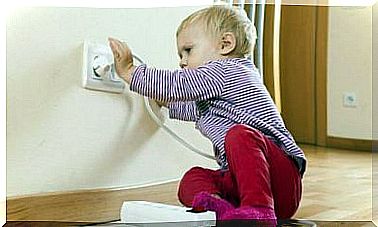Tips To Encourage Cardiovascular Health In Children

Promoting healthy habits is the fundamental pillar to preserve cardiovascular health in pediatric age. Take care of your baby as much as you take care of yourself and try to have a diet adjusted to his needs. Food and physical exercise are two of the essential conditions to take care of your heart.
The rhythm of life has changed us, however there are premises that remain the same. We have to eat well, sleep well, and exercise. Those three aspects offer a good foundation for being healthy people.
In addition, we must take care of our emotions and learn to channel them positively, for which it is essential to take care of the three previous aspects ; It is even logical: sleeping and eating badly can cause us bad mood, stress, pain, anxiety …
So in principle we must meet our basic needs. Then we must be aware of preserving our health, which we can achieve, at least in the case of a child, with the application of immunizations and the prevention of accidents.
I see it necessary to change. It is necessary that we wake up, that we do not let events overwhelm us, we must plan our routine and it must include conscious habits in order to avoid ingesting excess fat, salt or sugar. Let’s try to delay our children’s contact with carbonated drinks as long as possible. They are born without knowing what they are and what they know, avoid including them in your diet.
“Cardiovascular diseases are due to disorders of the heart and blood vessels, including coronary heart disease (heart attacks), cerebrovascular disease (stroke), increased blood pressure (hypertension), among other aspects.”
-World Health Organization (WHO) –

Recommendations to take care of the little heart
The Texas Heart Institute’s recommendations include the following foods or preparations for occasional consumption:
- cola drinks
- cold cuts and sausages
- butter
- margarine
- milk cream
- Mayonnaise
- caramel cookies
- stuffed cookies
- candies
- bakery and pastry products
- artificial juices
- fast foods
- fried
The specialists of that American institute assure that a diet rich in fat and sodium and poor in fiber is considered a risk factor for metabolic diseases. They also warn, something that you must internalize as a mother: Eating habits are incorporated in childhood and last into adulthood, and are determined by family customs that depend on various factors.
A balanced diet in childhood, considering energy and nutrient needs according to age, will allow proper growth and development without incurring excesses or deficits.
Certain variables play important roles in a person’s chances of suffering from heart disease. These variables are known as risk factors. Some risk factors can be changed, treated, or modified; others don’t.
In most cases, hypertension in children can be controlled by making lifestyle changes. Risk factors begin to act from an early age, either due to exposure to unhealthy lifestyle habits (poor diet, sedentary lifestyle, smoking) and / or the classic cardiovascular risk factors.

How to encourage cardiovascular health in your children:
- Help your child maintain a healthy body weight. Overweight children generally have higher blood pressure.
- Increase your level of physical activity.
- Limit your salt intake.
- Warn him of the risks of cigarette smoking. The nicotine in cigarettes narrows the blood vessels, making it even more difficult for blood to pass through them.
Like adults, eating foods high in saturated fat, not getting enough exercise, and a family history of heart disease can cause high cholesterol levels in children. The rise in childhood obesity is also causing high cholesterol levels at younger ages.
For these reasons, the guidelines approved by the American Academy of Pediatrics recommend that every child, even without a family history of heart disease, have blood cholesterol tested between the ages of 9 and 11, and then again between the ages of 9 and 11. 17 and 21 years old. Doctors believe that these early tests and monitoring of cholesterol levels in childhood can help reduce the risk of heart disease in later life.









